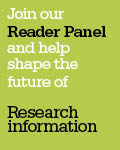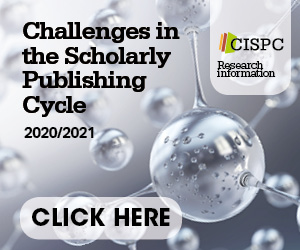E-books come of age with their readers
Electronic books are emerging as valuable new resources from STM publishers. Dan Tonkery, director of business development for EBSCO Information Services, gives an overview of some of the materials that are available
Students who were born in the digital age expect and prefer all of their information in electronic form, according to reports from large research and major college libraries. It should not be a surprise that books fall into this category as well.
Stored on a digital shelf – either the publisher’s e-book platform (Springer’s eBook Collection accessed via SpringerLink, for example) or in the library’s online public access catalogue (OPAC) – e-books are immediately accessible to patrons for reading, saving, printing or downloading. Researchers can access them from PCs, laptops or handheld devices. STM content is particularly suitable for e-books. It is time-critical and online delivery makes it easier to update. It is also typically reference in nature so is generally short enough to read online.
Publishers are taking note
The e-book industry experienced several years of starts and stops. Now, however, mainstream STM publishers are giving serious attention to developing their books, reference works and book series publications in an electronic format. All of the major STM publishers have experimented with different platforms, various business models and taken a risk with providing their book collections online. While usage is just starting to grow, feedback indicates that publishers have another hit product on their hands. And, in response, STM hosts such as MetaPress have completely redesigned their software to incorporate the book format into their electronic offerings.
Compared to their print counterparts, e-books offer many benefits to libraries. These include the elimination of manual and physical processing, the expansion of material accessibility, availability and usage, saved shelf space and no risk of damage or theft. Libraries also receive MARC records and COUNTER-compliant usage statistics to streamline the administrative and evaluative processes that are associated with providing access to e-books.
The model of e-books is following the model of e-journals. E-book packages are being sold primarily via annual subscription or annual lease. Publishers are also bundling their e-book and e-journal content into one combined interface. This structure complements the core strengths of subscription agents like EBSCO that facilitate ordering and renewals and enable consolidated payment.
Libraries may order customised, full or fixed-subject collections based on the needs of their institution. EBSCO is currently collecting book metadata to add to both the EBSCOhost and EBSCO A-to-Z knowledge bases, which will enable cross-platform searching and linking. As a result, end users will be able to access e-journal and chapter-level e-book content simultaneously.
EBSCO currently offers e-books in various bundle and access models via Springer, Wiley InterScience, Taylor & Francis, Cambridge University Press, and the Pan American Health Organization.
Some of the resources on offer
 Springer's electronic books can be accessed through subscription agents such as EBSCO
Springer's electronic books can be accessed through subscription agents such as EBSCO The Springer eBook Collection was the world’s first online book collection tailored specifically for the requirements of researchers and scientists. It currently includes more than 12,000 works in the STM fields and more than 3,000 new titles are to be added each year. These titles are packaged into 12 different online libraries (with no overlap in content) in the categories of architecture, design and arts, behavioural science, biomedical and life science, business and economics, chemistry and material science, computer science, earth and environmental science, engineering, humanities, social science and law, mathematics, medicine, and physics and astronomy.
A library may purchase the complete package or select any of the 12 online libraries available. Generous discounts are provided for multiple online library purchases and for consortia.
Springer eBooks are sold under an ownership business model with full archiving rights. The library owns all eBook content purchased. Hosted on the SpringerLink platform, Springer eBook content is displayed in fully searchable PDF and HTML formats. Additional benefits include chapter-level searching, MARC 21 records provided at no extra cost, unlimited simultaneous access and COUNTER-compliant usage data. The pricing model is very flexible as well. There are five price bands based on the number of FTEs (full-time equivalents) and the institution’s research intensity.
Wiley InterScience OnlineBooks is another impressive new e-book offering. The collection spans more than 1,700 titles in the subject areas of STM, business and finance. Accessible via the Wiley InterScience platform, these titles are available either for purchase or via annual subscription. Wiley’s OnlineBook purchasing model empowers the library with the flexibility to build a collection on a title-by-title basis. It also offers the choice to subscribe to titles or pay once for ongoing access and the opportunity to review title usage and swap out titles no longer needed. Additional benefits include MARC records (for no additional charge), COUNTER-compliant usage statistics and unlimited simultaneous use.
 Both Wiley and Cambridge University Press have extensive collections of online books
Both Wiley and Cambridge University Press have extensive collections of online books Another major publisher with a strong e-book offering is Taylor & Francis. Its eCollections are focused in the areas of social sciences and humanities and have been sourced from imprints such as Routledge, RoutledgeFalmer and Taylor & Francis. These eCollections are available as annual subscriptions in the following subject-specific areas: education, philosophy, history, business and management, politics and international relations, literature, economics, sociology, geography and religion. New titles in each discipline will be rolled into the collections throughout the library subscription period as they are published.
Also available from Taylor & Francis are 24 subject-specific bestseller collections, each consisting of 100 titles. Libraries may also customise their e-book collection by selecting a minimum of 50 titles from the 15,000 Taylor & Francis titles available (volume discounts are provided).
Additional benefits of the Taylor & Francis offering include immediate access from any desktop via IP authentication or username and password. Searches can be made across a broad range of titles and thousands of chapters and search results are clearly identified and hyperlinked. Users may interact with the material and make and save their own annotations, highlights and bookmarks. Users can apply further personal focus to the material by constructing their own Research Books (up to the value of 100 pages per year from across the subscribed resource). Each title can be viewed simultaneously by five users but an online reservation system is provided in the event that someone is unable to access a title. Users can print or copy up to five per cent of any title within the subscription. MARC records are provided free of charge and COUNTER-compliant usage statistics are also provided.
Another important publisher in the humanities field is Cambridge University Press, offering three distinct e-book packages derived from premium, branded book content, created especially for these collections. The 221-title Complete Companions Collection consists of currently-published textbook series with introductions to major writers, artists, philosophers, topics and periods. This collection spans most important areas within the humanities discipline, including information about David Hume, Martin Luther, Joseph Conrad, the Scottish Enlightenment, liberation theology, Christian ethics, the Roman Republic, Arthur Miller, modern Irish culture and more. It also includes 2,000 commissioned essays that are fully searchable by author, title, topic and theme.
This collection is also available as two separate sub-collections, the 134-title Literature and Classics Companions Collection and the 87-title Philosophy, Religion and Culture Companions Collection. Freely downloadable MARC records and ICOLC-compliant usage reports are available. The Complete Companions Collection and its sub-collections allow unlimited simultaneous use.
Meanwhile, for those researching or simply interested in public health, the Pan American Health Organization (PAHO) Electronic Collection is a valuable tool for rapid, direct access to accurate, up-to-date information in this field.
This reference tool is comprised of Building Better Health: A Handbook of Behavioral Change; Health in the Americas, 2002 Edition; Health Promotion: An Anthology; Health Statistics from the Americas, 2003 Edition; Investment in Health: Social and Economic Returns; Zoonoses and Communicable Diseases Common to Man and Animals, 3rd Edition, Volumes I, II, and III; Vaccines: Preventing Disease and Protecting Health; Violence against Women: The Health Sector Responds; Obesity and Poverty: A New Public Health Challenge; and Natural Disasters: Protecting the Public's Health.
This collection of publications, already diverse in its offerings, will continue to expand over time. As the collection grows, the subscription price will remain the same.
With such a range of e-books and resources becoming available there should be plenty to please the new generation of students and researchers born in the digital age.






